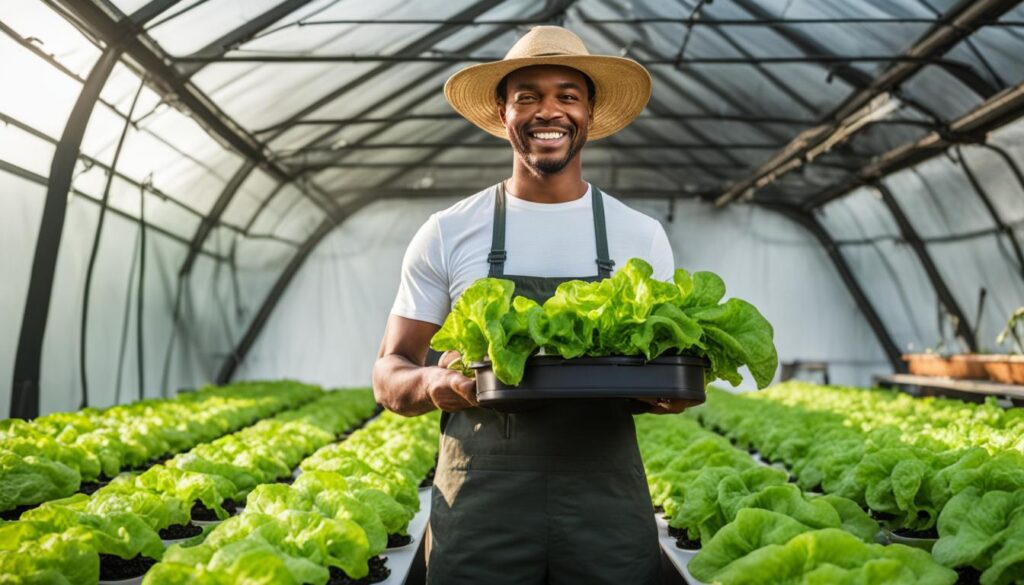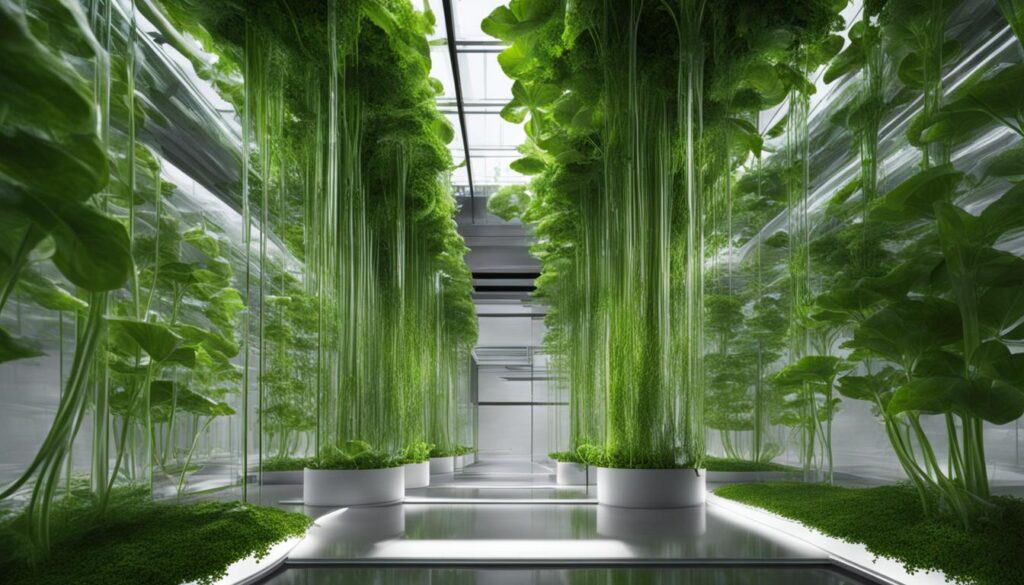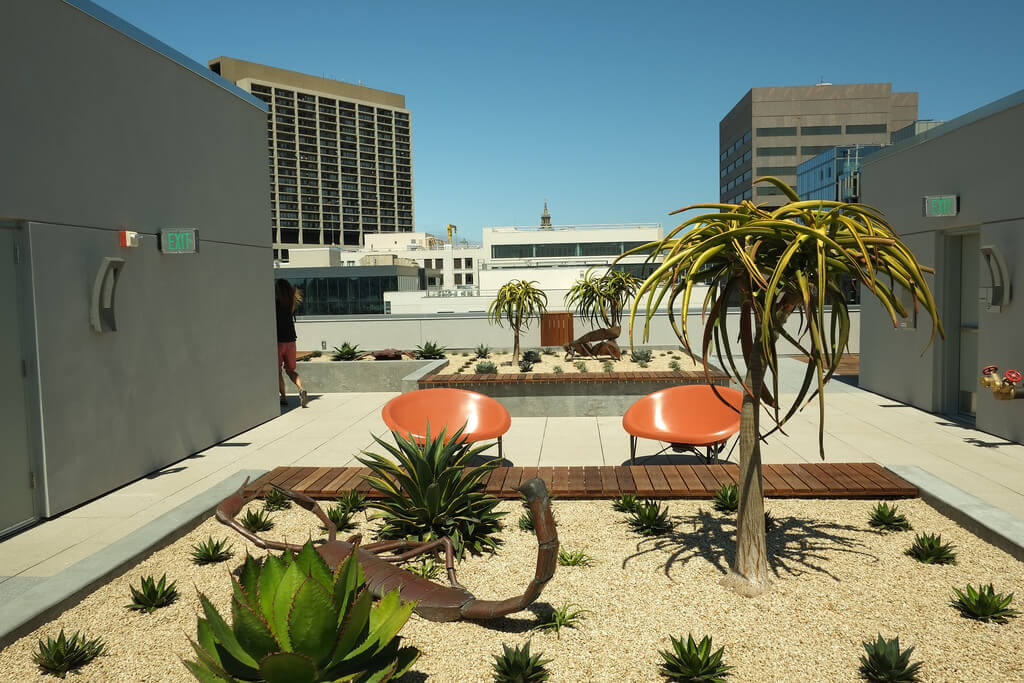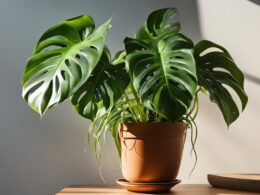Have you ever wondered if plants can grow without soil? Well, the answer is yes! While soil is the natural habitat for plants, they can also thrive in artificial media. This concept of growing plants without soil has been around for quite some time, with its principles first understood in the 1860s. Commercial possibilities were realized in 1929, and since then, the practice has gained popularity.
Growing plants without soil can be incredibly practical in situations where good soil is not available or when you want to grow high-value out-of-season crops. It also offers various health, agricultural, and therapeutic benefits, making it suitable for homeowners and amateur gardeners as well. However, the commercial application of this method has been limited due to economic considerations and the need for expert supervision.
Post Summary:- Growing plants without soil is a well-established practice that began in the 1860s.
- It can be a practical solution in areas with limited access to good soil or for growing high-value out-of-season crops.
- There are numerous health, agricultural, and therapeutic benefits associated with growing plants without soil.
- Economic considerations and the need for expert supervision have limited the commercial application of this method.
- There are various methods of growing plants without soil, including hydroponics and other artificial media systems.
Principles of Growing Plants Without Soil
Growing plants without soil requires a deep understanding of plant physiology and the principles involved in crop production. While providing essential nutrients and water are vital for plant growth, other interrelated processes such as photosynthesis, respiration, transpiration, and reproduction must also be taken into consideration. Plant physiology governs how plants utilize these processes to carry out their life functions and ensure their survival.
Photosynthesis, for example, is the process by which plants convert light energy into chemical energy, utilizing carbon dioxide and water to produce glucose and oxygen. Respiration, on the other hand, is the process by which plants break down glucose to release energy for their metabolic activities. Transpiration refers to the loss of water vapor from the plant through the stomata in the leaves, helping to cool the plant and facilitate nutrient uptake.
“Understanding plant physiology is crucial in providing the ideal conditions for plant growth without soil. By harnessing the knowledge of these processes, growers can optimize crop production and ensure healthy, thriving plants.”
Furthermore, plant reproduction is an essential aspect of growing plants without soil. Plants reproduce through various methods, including sexual reproduction, where pollen from the male reproductive organs fertilizes the female reproductive organs to produce seeds. As such, proper management of plant reproductive processes is crucial to ensure successful crop production.
In addition to plant physiology, engineering and economic considerations play a significant role in establishing installations for growing plants without soil. Proper engineering design ensures the support and delivery of nutrients to the plants, while economic considerations affect the feasibility and viability of adopting soilless cultivation methods in commercial settings. By considering these principles and factors, growers can maximize the potential of growing plants without soil and achieve optimal crop production.
Principles of Growing Plants Without Soil
| Process | Description |
|---|---|
| Photosynthesis | The process by which plants convert light energy into chemical energy, utilizing carbon dioxide and water to produce glucose and oxygen. |
| Respiration | The process by which plants break down glucose to release energy for their metabolic activities. |
| Transpiration | The loss of water vapor from the plant through the stomata in the leaves, helping to cool the plant and facilitate nutrient uptake. |
| Reproduction | Plant reproduction, including sexual reproduction, is essential for successful crop production without soil. |
Benefits of Growing Plants Without Soil
Growing plants without soil offers numerous benefits, making it an attractive option for various individuals and situations. Whether you have limited land availability or are looking to produce high-value crops, this method has much to offer. Additionally, it provides an alternative for health reasons and serves as a popular choice for amateur gardening.
Health Reasons
One of the significant advantages of growing plants without soil is the reduction in health risks associated with certain fertilizers. For instance, by eliminating the need for night soil as a fertilizer, this method helps to decrease the incidence of diseases caused by its usage. This makes it a safer and healthier option for both growers and consumers.
Limited Land Availability
For areas with limited available land suitable for agriculture, growing plants without soil provides a viable solution. By utilizing this method, growers can maximize their production potential even in small spaces. This is especially beneficial for urban areas or regions where good soil is scarce, allowing for the efficient utilization of limited land resources.
High-Value Crop Production
Another advantage of growing plants without soil is the ability to produce high-value crops. By carefully controlling the growing environment, factors such as temperature, light, and nutrient levels can be optimized to create ideal conditions for crop growth. This precision allows for the cultivation of specialty or out-of-season crops, which often command higher prices in the market.
Amateur Gardening
Growing plants without soil is not limited to commercial growers. It is also popular among homeowners and amateur gardeners. This method offers a convenient and manageable way to grow plants, making it suitable for those who may not have access to large garden spaces or who prefer a controlled and efficient gardening approach. It allows individuals to enjoy the benefits of gardening, such as stress reduction, improved mental health, and the satisfaction of nurturing plants, regardless of their gardening experience.

Comparing the Benefits of Growing Plants Without Soil
| Benefit | Explanation |
|---|---|
| Health Reasons | Reduces the risk of diseases caused by certain fertilizers |
| Limited Land Availability | Enables efficient use of limited land resources |
| High-Value Crop Production | Allows for the cultivation of specialty or out-of-season crops |
| Amateur Gardening | Provides a convenient and manageable approach for homeowners and amateur gardeners |
Limitations of Commercially Growing Plants Without Soil
While growing plants without soil offers a range of benefits, there are several limitations that have hindered its commercial application. These limitations primarily revolve around economic considerations, management challenges, technical difficulties, and crop selection.
One significant limitation is the high initial cost associated with establishing installations for growing plants without soil. The infrastructure and equipment required can be expensive, making it a costly method for commercial growers. Additionally, expert supervision is crucial to ensure the success of this cultivation method, further adding to the expenses.
Commercial growers may also face management challenges specific to growing plants without soil. These challenges include the proper preparation of growing tanks or beds, applying the nutrient solution in appropriate quantities, dealing with toxic substances, and effectively controlling diseases and insect infestations. Overcoming these challenges requires specialized knowledge and expertise, which may not be readily available to every commercial grower.
Furthermore, selecting the right crop for growing without soil is essential but can be a complex task. It requires careful analysis of market demands, production costs, and the availability of labor and supervision. Commercial growers need to consider these factors to ensure that the chosen crop is economically viable and suitable for soil-less cultivation.
Comparison of Limitations in Commercially Growing Plants Without Soil
| Limitations | Description |
|---|---|
| Economic Considerations | High initial costs and the need for expert supervision make it a costly method. |
| Management Challenges | Proper preparation of growing tanks or beds, applying the nutrient solution, dealing with toxic substances, disease and insect control, and other engineering problems. |
| Technical Difficulties | Overcoming challenges specific to growing plants without soil, such as ensuring proper nutrient delivery and root support. |
| Crop Selection | Careful analysis of market demands, production costs, and availability of labor and supervision to select the right crop suitable for soil-less cultivation. |
While these limitations pose challenges to commercial growers, ongoing research and advancements in technology aim to address these issues. As the understanding and implementation of growing plants without soil continue to improve, it is expected that these limitations will become less significant, opening up new opportunities for commercial cultivation in the future.
Methods of Growing Plants Without Soil
When it comes to growing plants without soil, there are several methods that have been developed to provide the necessary support and nutrients for plant growth. These methods include hydroponics, water culture, sand culture, gravel culture, and the adsorbed-nutrient technique. Each method has its own unique characteristics and variations, but they all share the common goal of allowing plants to thrive in a soil-less environment.
Hydroponics, also known as water culture, is perhaps the most well-known method of growing plants without soil. In hydroponics, plants are grown with their roots partially submerged in a nutrient-rich solution. This method allows for precise control over the nutrient levels and water supply, resulting in optimal growth and productivity.
Water culture is just one variation of hydroponics. other methods include sand culture, gravel culture, and the adsorbed-nutrient technique. Sand culture involves growing plants in sand, which provides support while allowing for proper root aeration. Gravel culture, on the other hand, uses gravel as a growing medium, allowing for good drainage while still providing support and nutrients. The adsorbed-nutrient technique involves growing plants in an inert material, such as synthetic resin, that has nutrients adsorbed onto its surface.
“The methods of growing plants without soil have opened up new possibilities for agriculture and gardening. Hydroponics and other soil-less techniques provide a way to grow plants in areas where soil quality may be poor or unavailable. They also allow for precise control over nutrient delivery and water supply, resulting in optimum growth and productivity.”
Whether you choose hydroponics, water culture, sand culture, gravel culture, or the adsorbed-nutrient technique, all of these methods offer unique advantages and benefits. By understanding and implementing these methods, gardeners and farmers can unlock a world of possibilities for growing plants without soil.

Growing Plants Without Soil in Unique Environments
Growing plants without soil is not limited to traditional terrestrial environments. Scientists and researchers are exploring innovative methods to cultivate plants in unique settings such as outer space. The unique challenges presented by these environments require creative solutions to ensure successful plant growth.
One of the methods being studied is aeroponic culture, which involves suspending plants in air and periodically spraying their roots with a nutrient-rich solution. This technique allows plants to thrive without the need for soil or traditional growing mediums. Aeroponic culture offers several advantages, including efficient use of water and nutrients and the ability to cultivate plants in a space-saving manner.
Another fascinating possibility is growing plants on other celestial bodies such as Mars or the moon. In this scenario, the lack of a natural soil environment means that alternative methods must be employed. Scientists are exploring the potential of using the dust covering these surfaces as a growing medium. By providing the necessary nutrients and carefully controlling other factors such as temperature and radiation exposure, it may be possible to establish sustainable plant growth on these extraterrestrial surfaces.
Comparison of Different Methods of Growing Plants in Unique Environments
| Method | Advantages | Challenges |
|---|---|---|
| Aeroponic Culture | – Efficient use of water and nutrients – Space-saving cultivation – Reduced risk of soil-borne diseases |
– Requires precise control of nutrient spray cycles – High initial setup costs – Dependency on technology |
| Growing on Mars/Moon | – Utilizes available resources – Potential for sustainable colonization – Scientific research opportunities |
– Lack of natural soil environment – Extreme temperature and radiation exposure – Limited water availability |
While still in the experimental stages, these innovative approaches to growing plants without soil hold immense potential for the future of agriculture and space exploration. By expanding our understanding of plant physiology and developing new techniques, we can overcome the challenges posed by unique environments and create sustainable solutions for food production and beyond.
Plants Growing Without Soil in Natural Settings
While growing plants without soil is often associated with artificial media and controlled environments, there are also instances of plants thriving without soil in natural settings. One fascinating example is the way certain tropical plants attach themselves to trees in order to grow and flourish. Orchids, ferns, bromeliads, and philodendrons are just a few examples of plants that can be found growing in this manner.
These tropical plants derive support from the branches of trees, using them as a natural structure to climb and expand their reach. They have adapted to extracting the necessary nutrients and moisture from frequent rain showers and the composted materials that flow down the trunk and branches of the host tree. Their roots, which are exposed to the air for most of the day, provide them with the oxygen necessary for their growth.
This unique growth strategy showcases the resilience and adaptability of plants in various environments. By attaching themselves to trees, these plants are able to access the oxygen and nutrient sources they need to survive and thrive without relying on traditional soil. It is a remarkable example of how plants have evolved to find alternative ways to grow and flourish in challenging conditions.
To better understand the incredible ability of these plants to grow without soil, let’s take a closer look at the specific oxygen and nutrient sources they rely on:
| Oxygen Sources | Nutrient Sources |
|---|---|
| Exposure to air | Rain showers |
| Epiphytic adaptations | Composted materials from trees |
| Bacterial breakdown of organic matter |
As we can see, these plants have developed unique adaptations to access the necessary oxygen and nutrients they need to survive. They have found a way to thrive without relying on traditional soil as their nutrient source, and instead, have tapped into the resources available in their natural surroundings.
Can Pineapple Plants Thrive Without Soil Using Coffee Grounds as a Fertilizer?
Coffee grounds for pineapple plants have gained popularity as an alternative fertilizer. These nitrogen-rich grounds can enhance soil structure, promote microbial activity, and provide essential nutrients. Though pineapples traditionally grow in soil, using coffee grounds as a fertilizer may potentially allow them to thrive without soil, offering an innovative gardening approach.
Conclusion
In conclusion, plants can grow without soil, as long as they are provided with the necessary components for growth. These components include water, minerals, support, oxygen, and sunlight. One method that has been developed to provide plants with these requirements in a soil-less environment is hydroponics. By using a nutrient-rich solution, plants can thrive and grow without the need for traditional soil.
Furthermore, growing plants without soil has also been explored in unique environments such as space. Researchers are investigating the possibilities of cultivating plants in weightless environments like the International Space Station. By carefully balancing the specific conditions and requirements for plant growth, it may be possible to sustain plant life in these unconventional settings.
In addition to artificial methods, some plants have naturally adapted to grow without soil in nature. Tropical plants like orchids, ferns, bromeliads, and philodendrons can be found attached to trees, deriving support and obtaining water and nutrients from rain showers and decomposed materials. These natural adaptations allow these plants to thrive without traditional soil.
Overall, whether through innovative techniques like hydroponics, exploring unique growing environments, or leveraging natural adaptations, plants can indeed grow without soil. With the right conditions and resources, plants have the incredible ability to thrive and flourish, even in the absence of traditional soil.
FAQ
Can plants grow without soil?
Yes, plants can grow without soil by providing them with the necessary components for growth, such as water, minerals, support, oxygen, and sunlight.
What are the principles of growing plants without soil?
The principles involve understanding plant physiology, crop production, plant nutrition, and interrelated processes like photosynthesis, respiration, transpiration, and reproduction.
What are the benefits of growing plants without soil?
Growing plants without soil is beneficial for areas with limited land availability, allows for greater production of high-value crops, and can be a solution for health reasons. It is also suitable for homeowners and amateur gardeners.
What are the limitations of commercially growing plants without soil?
The limitations include economic considerations, management challenges, technical difficulties, and the need for expert supervision. Additionally, selecting the right crop depends on careful analysis of market demands and production costs.
What are the methods of growing plants without soil?
There are four main methods: hydroponics (water culture), sand culture, gravel culture, and the adsorbed-nutrient technique. Each method has variations and techniques for nutrient delivery and root support.
Can plants grow without soil in unique environments?
Yes, plants can be grown without soil in unique environments such as space. Researchers are exploring growing plants in weightless environments like the International Space Station and using aeroponic culture. Growing plants on Mars or the moon using their dust as a growing medium is also a possibility.
Do plants grow without soil in natural settings?
Yes, some plants have naturally adapted to grow without soil in nature. Tropical plants like orchids, ferns, bromeliads, and philodendrons can be found growing attached to trees, deriving support, water, and nutrients from rain showers and composted materials.
Can plants thrive and grow without soil?
Yes, with the right conditions and resources, plants can thrive and grow without soil, making use of methods like hydroponics and adapting to unique environments.








